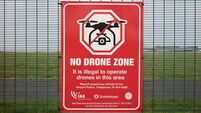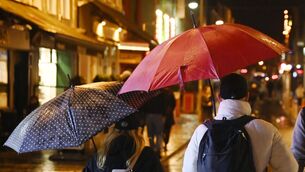Revenge of the Commuter Belt
They left family networks in the city for the surrounding counties of Kildare, Meath, Wicklow, Laois and Louth – the Commuter Belt.
At the last local elections these migrants steered clear of the polls, placated by economic growth and promises of better infrastructure, affordable housing and cheaper childcare.
This time around they are among the worst victims of the property crash, and jobs held by professionals are disappearing every week.
The migrants have as much justification to take their anger to the ballot box as anybody. Statistics suggest if they arrive and make their feelings known the Government partners should be worried.
“A lot depends on turnout. I would be guessing turnout in the low 60s (per cent). If we end up with turnout in the low 70s then I think it could be a very bad election for Fianna Fáil,” said Dr Adrian Kavanagh.
A lecturer in politics at NUI Maynooth, he studied turnout trends across the country after the 2004 vote.
At that time electoral districts along the southern and western seaboards, particularly in rural areas, turned out in large numbers, but the commuter belt and inner city Dublin stayed away.
He believed this was due to the lack of close ties people had to the town and county councils. In those areas, many had only moved recently. Today, the difference in the lives of these voters compared with 2004 is stark.
In the build-up last time, Kildare council hosted a debate on a housing strategy prepared by consultants. It had emerged that between 1996 and 2002, 13,175 houses were built, but demand remained high, and customers would require more than 2,000 houses a year.
“On the basis of performance in recent years there are indications that construction capacity, per se, will not be a major concern,” the meeting heard.
According to the minutes of meetings at the time, the major gripe of elected representatives was the need to secure the maximum amount of affordable housing units.
Afterwards, the boom accelerated. The latest census revealed the population in the south of the county jumped by 17%. One in 10 are in their early 30s.
An above-average amount of the population worked in construction and manufacturing, and more than 25% of all houses in the county were built since 2001.
The confluence of negative hits means today the problem is not the affordability of new houses but the ability to stay in homes already purchased.
Five years on these voters have more established roots and common concerns with their neighbours.
At Monasterevin Gaelic Football Club, the influx has led to bumper numbers at underage level. The club’s PRO, Michael Connolly, affectionately ribbed the “imports” who would have grown up following the Boys in Blue and now see their children playing in the Lily White county.
“It is not just in our club; you are seeing clubs nearby being able to put out teams at under six, under seven and under eight,” he said. “[At adult level] You are probably seeing lads missing less matches – they don’t have the work that kept them busy before.”
When Leinster’s westward migration took off, Monasterevin reacted fast. A slew of new housing developments took off as the N7 by-pass opened. This further incentivised family life in the area.
Weeks before the polls opened in 2004, plans to develop The Hulk, a 10-hectare former workhouse site on the western flank of the town, were given the green light at local level.
Today, it is still a greenfield site and, on the Dublin end of the town, estates still offer the “last remaining units” to an ebbing market.
In Monasterevin, as in other towns across Kildare, there are houses left unfinished. They appear plastered and painted on the outside, but inside the skeletal sight of the timber studs remains.
Such was Kildare’s population explosion before the last election the infrastructure around the houses, rather than the ability to pay the mortgages, was a concern.
Traffic alleviation plans were a big seller for a number of years, said Chris Fingleton.
He works for the Carlow Nationalist but reported in Kildare during the boom and still lives in Athy. Here, relief roads remain undelivered, but he said people’s priorities are not as they once were.
And people are trying to move back to Dublin.
On the national routes there have been improvements. The main artery serving south Kildare, the Naas Road, was widened to three lanes.
The Kildare rail route took 2.13 million passengers last year, but Irish Rail said across all its routes there has been a fall-off in demand.
At the pay and display car park at Monasterevin this week just 10 of the 44 parking spaces were occupied.
How likely the migrants are to lash out in the ballot box will possibly decide the local election vote.













